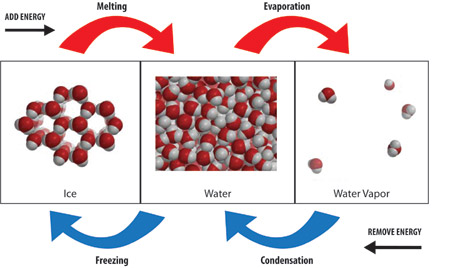Question #183ce
1 Answer
Explanation:
For starters, energy is not being absorbed when water condenses, it is being released.
Condensation is an exothermic process, which implies that when water goes from vapor at its boiling point to liquid at its boiling point, energy is being given off to the surroundings
Now, in order to be able to solve this problem, you need to know the value of water's enthalpy of vaporization,
Likewise, the enthalpy of vaporization tells you how much heat is released when
In water's case, you have
#DeltaH_"vap" = "40.66 kJ mol"^(-1)#
This value tells you that when
The first thing to do here is convert the sample of water from grams to moles by using water's molar mass
#1 color(red)(cancel(color(black)("g"))) * ("1 mole H"_2"O")/(18.015color(red)(cancel(color(black)("g")))) = "0.0555 moles H"_2"O"#
So, if
#0.0555 color(red)(cancel(color(black)("moles H"_ 2"O"))) * overbrace("40.66 kJ"/(1color(red)(cancel(color(black)("mole H"_ 2"O")))))^(color(blue)(=DeltaH_ "vap")) = color(green)(|bar(ul(color(white)(a/a)color(black)("2.5 kJ")color(white)(a/a)|)))#
I'll leave the answer rounded to two sig figs, but keep in mind that you have one sig fig for the mass of water.
So, you can say that when


